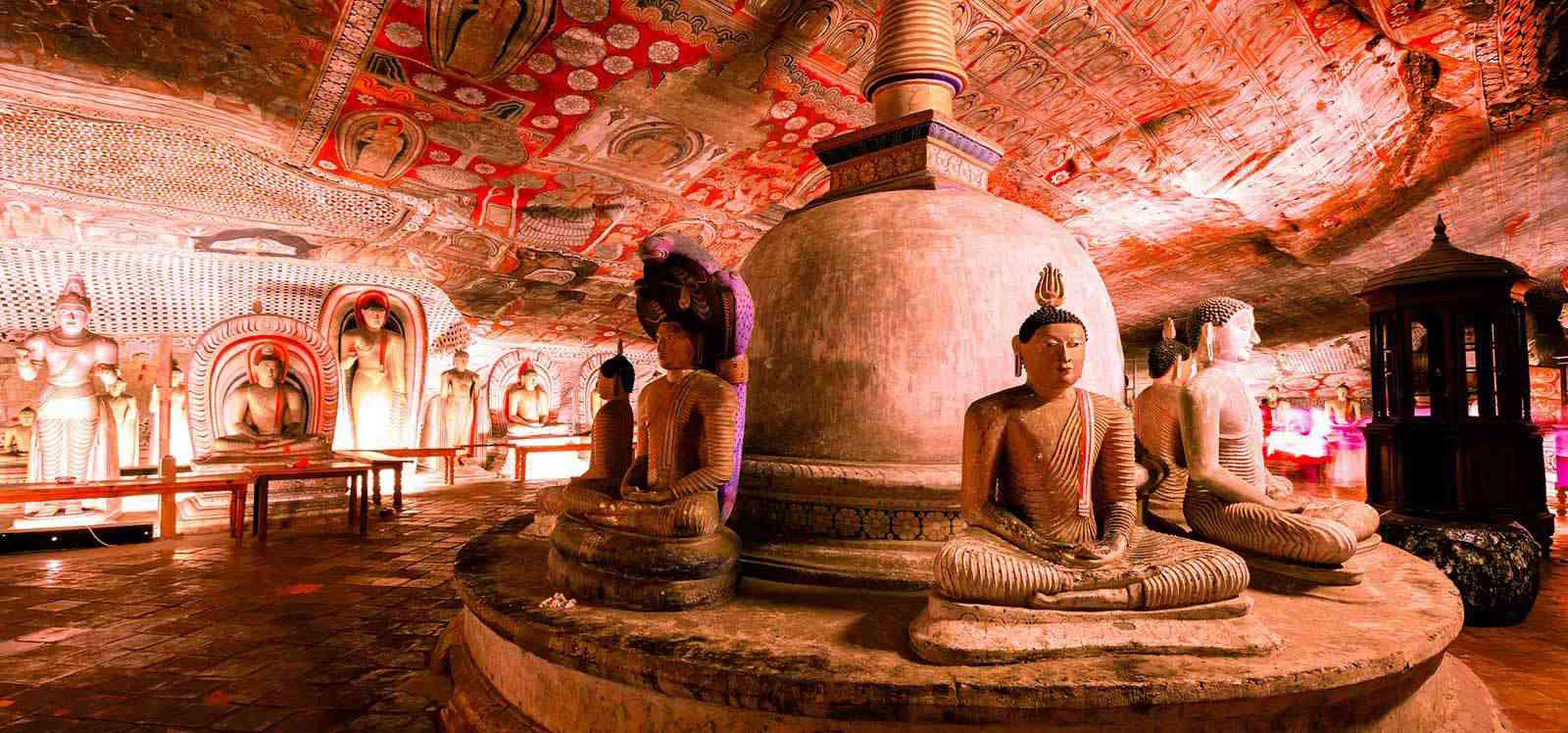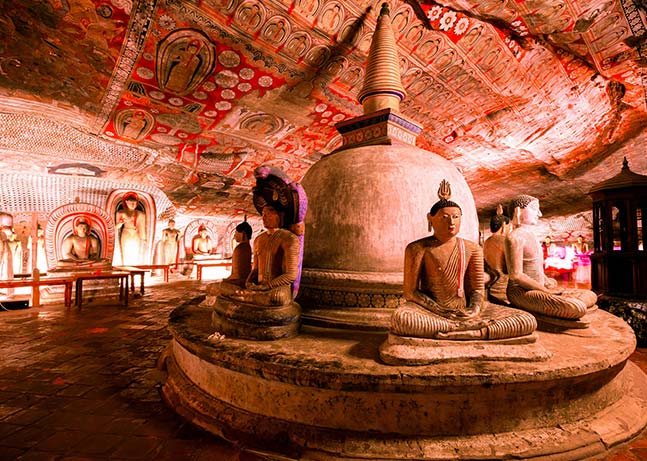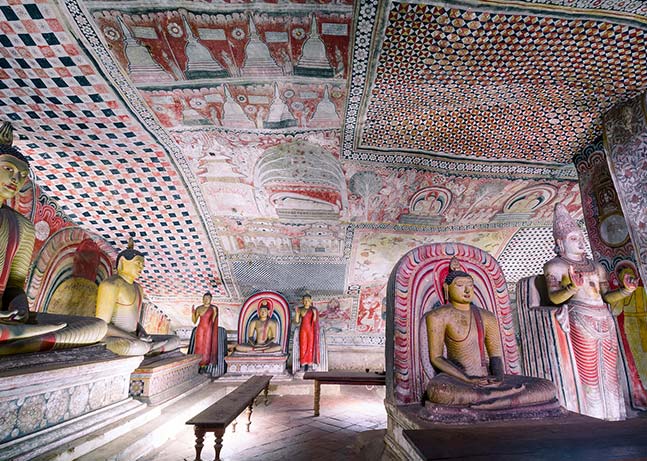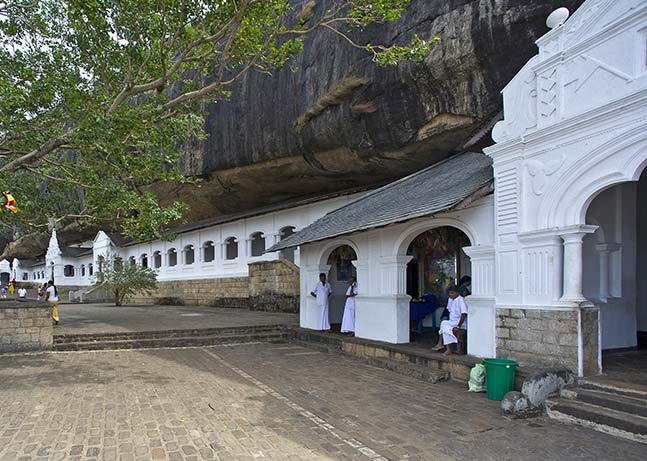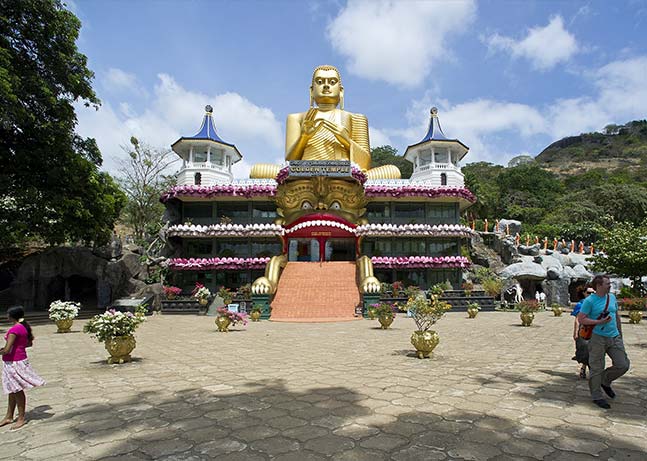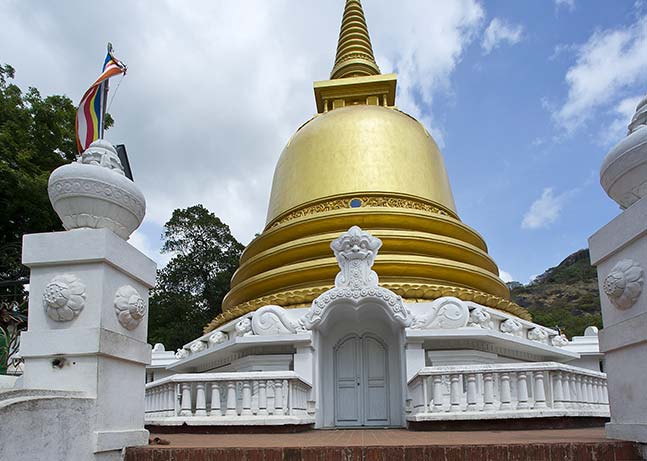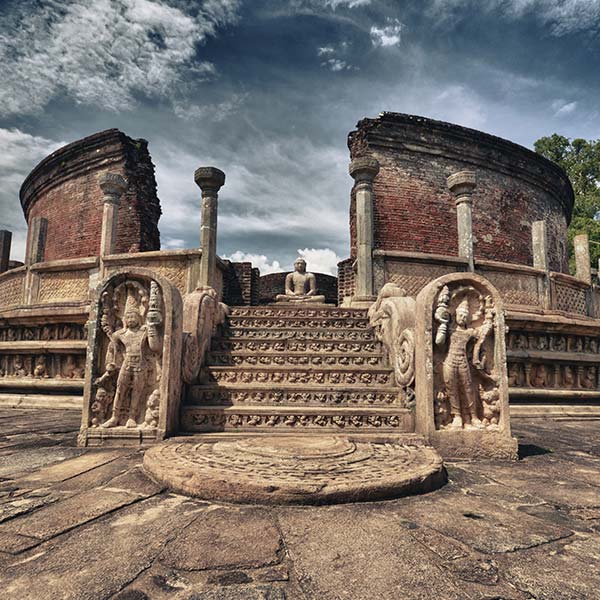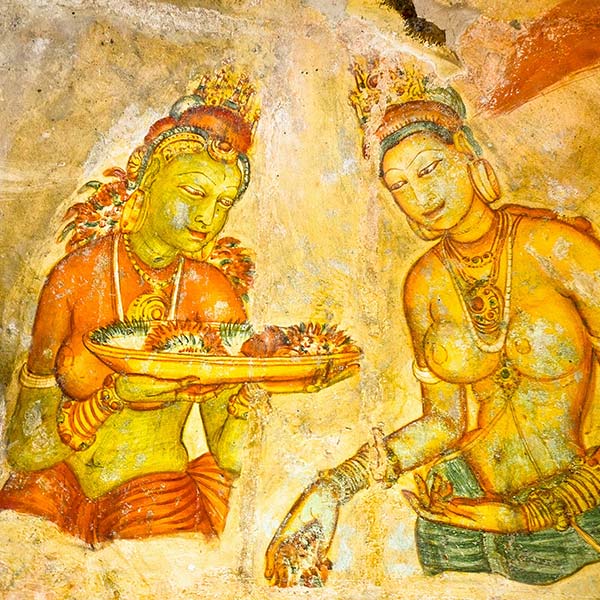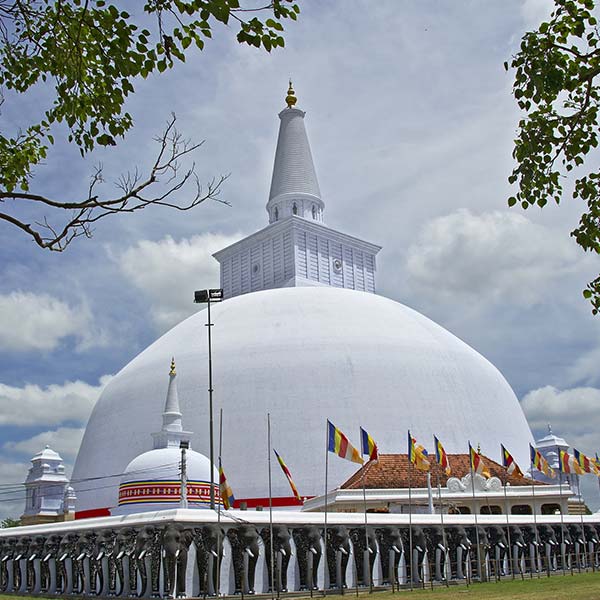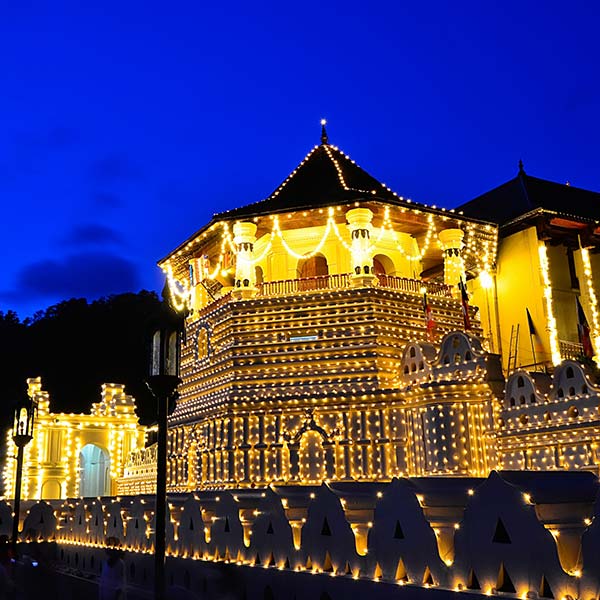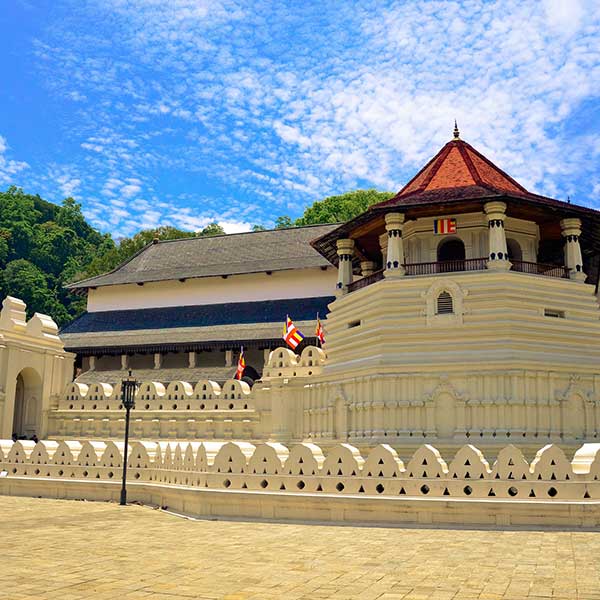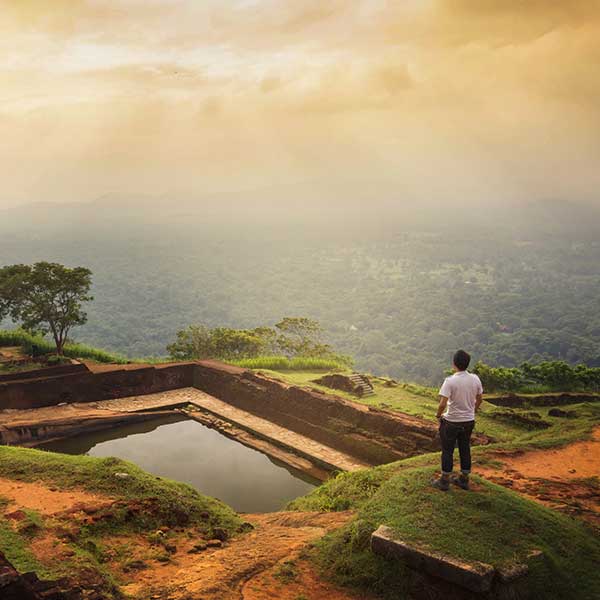The Dambulla temple has five caves and 157 statues of the Lord Buddha, many paintings on the ceilings and walls that emphasis the artistic talent of ancient days.
The history of the caves, rock and temple dates from the 1st century BC. The fascination of these caves is not only the statues but also the many intricate and delicate paintings that cover the ceiling and walls, created with indigenous traditional paints.
Because of the history, archaeological and artistic implications, the premises were declared as one of the UNESCO World Heritage sites in 1991. The temple has been in use for over 22 centuries and still holds a sense of benevolence and spirituality.
Visitors may climb up steps to the temple and the view from the top of the rock is as inspiring as the temple’s golden interior.
It is also believed to be home to prehistoric Sri Lankans as burial sites have been found with skeletons that are about 2700 years old. However, only after the arrival of Buddhism in Sri Lanka did the caves flourish. It is traditionally thought that Valagamba of Anuradhapura had the caves converted into a temple. He was exiled from Anuradhapura at the time and was seeking refuge from South Indian usurpers. He spent 15 years in hiding within the caves before reclaiming his capital and as a way of thanking the gods built the temples with the caves he once hid inside.
The statues and art found within the cave truly highlight the artistic abilities of those living in the past. It is well persevered and a walk through the caves will prove to be both insightful and a very memorable experience.
